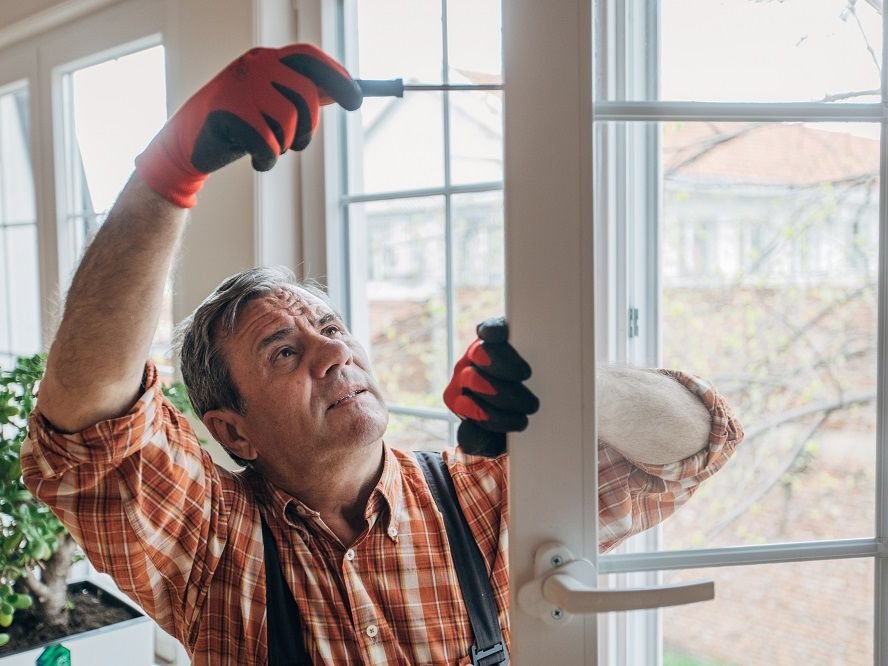Should I stay or should I go? To downsize or renovate?
You love your home, but it might not be the best fit for you during retirement. Should you sell and downsize or stay and renovate?

You love your home, but it might not be the best fit for you during retirement. Should you sell and downsize or stay and renovate?
As we get older, our needs for housing change. We can develop mobility or health issues that make it harder to maintain gardens or move up and down flights of stairs. When these problems arise, we’re left with the difficult decision: renovate or downsize.
So how do the two compare?
Renovating allows you to stay in your home, neighbourhood, and community you know and love. You don’t have to worry about the stress of house inspections, real estate agents, packing, moving, and all the legal requirements and expenses that come with selling and buying a home.
Renovating can allow you to choose the features and requirements that best suit you. It helps you stay at home for longer and can improve your property’s value.
It has, of course, cons as well. Timelines and budgets can quickly blow out, especially with current labour and resource shortages. While this is happening, you may need to live inside your home, often without access to facilities like kitchens, bathrooms or more. It can be very stressful and costly.
Past National Seniors research found that 36 per cent of people aged 50 and over are living in a home that is unsuitable for them as they age, and only 38 per cent of older people have taken steps to prepare their homes for when they get older. If the cost of renovating
When most of us think about downsizing, we think of retirement villages, but let's expand beyond that. While retirement villages are certainly one option, there are also granny flats, tiny homes, smaller houses, villas, apartments, or townhouses.
Many downsizing-style accommodations already offer what you need including, single-level living, wider doorways, shower recesses, and trip-free doorways. Many are also co-located with care facilities, making it easy to access medical treatment as required.
The federal government’s Downsizing Contributions Into Superannuation Scheme allows you to place excess proceeds from the sale of the family home into superannuation (up to $300,000 per person) without affecting contribution caps.
The scheme is now available to those over 60 from 1 July 2022.
Currently, there is a one-year exemption from the assets test for funds released from the family home and placed into superannuation. This is because the value of the family home is exempt from the assets test, whereas assets outside the family home, like super, are not. The Labor government has also promised to give people an additional year of exemption from the Age Pension assets test for any additional proceeds placed into super, bringing the asset test exemption to two years, however, there is no confirmation on when this will come into place.
If you are planning to renovate, it’s something you should get started on sooner than later, preferably before retirement comes. This isn’t something you want to leave too late.
Areas in your home that may need to be renovated:
Steps & door frames: Narrow door frames and stairs can become problematic in older age. Steps, in particular, can be hazardous. Falls for older people can lead to significant issues in older age, so you want to avoid them as best you can. Installing ramps into the home, widening doorways.
Bedroom location: If you have a multi-storey home and have your bedroom on the top floor, it may be worth considering moving it to the ground floor. While stair climbing may not be an issue for you now, it could be in years to come and help prevent accidental falls. If this bedroom does not currently have an ensuite, you might want to consider getting one installed.
Bathroom modifications: The bathroom can be one of the most dangerous areas of the home for falls and slips. Consider installing grab rails in the shower and bath can help prevent falls, a shower seat, tiles with grip, and high-set toilets.
Kitchen modifications:
Flooring: If your flooring has a lot of concrete or tiling, it may be worth considering it for something kinder on joints such as wood, cork, linoleum or vinyl. Rugs or carpets are also a good option for cushioning, however, tend to have a much shorter life and greater cleaning requirements.
Garden: A once-treasured garden can quickly become unmanageable if mobility issues like arthritis develop as you get older. You might consider replacing the lawn with decking, paving, gravel or sand, installing a sprinkler system, and growing low-maintenance plants.
To get started, check out the suggested guidelines at the Liveable Housing Australia website.
You might also like to check out our interview with home renovation guru and media personality Cherie Barber here.
If you are looking at downsizing and want to understand what the costs and benefits might look like in dollars, check out our new Downsizing Calculator. The calculator helps you estimate the costs and benefits of downsizing, particularly with downsizing contributions to superannuation rules soon coming into effect.
The calculator estimates the costs associated with buying and selling a new home and tells you how much excess proceeds you could put into your superannuation.
Use the calculator here.
For further reading: Downsizing, Superdraft







